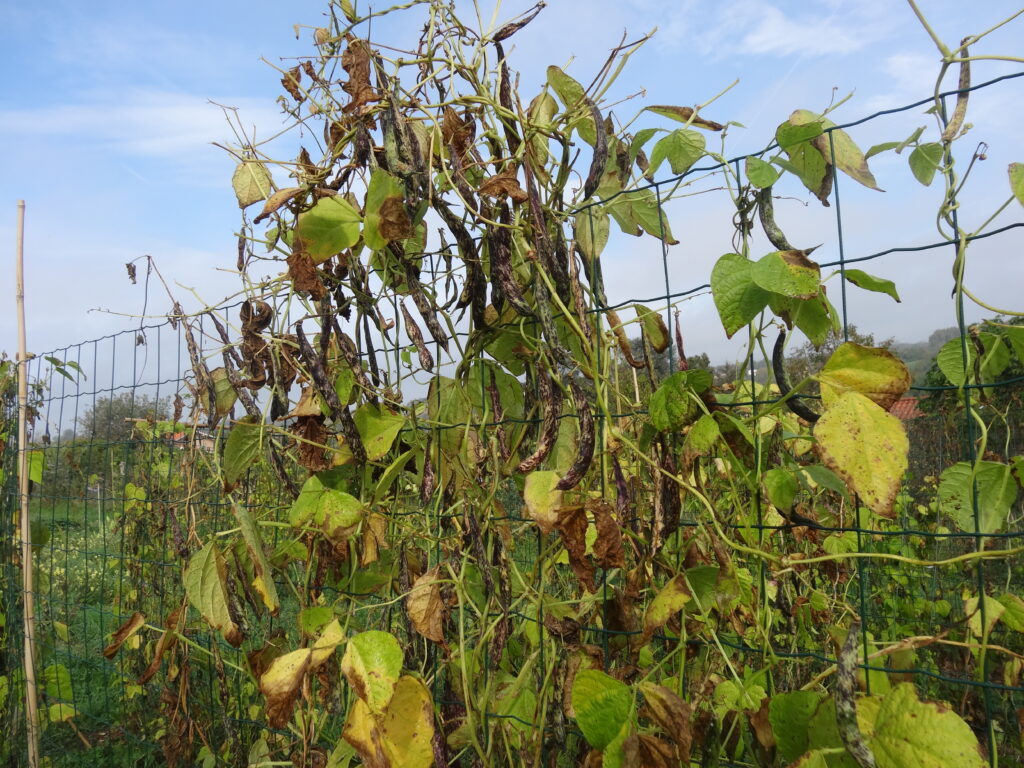Living lab Bean-Lyon
FRANCE
MEAT BEAN / COMMON BEAN
- Phaseolus vulgaris -
Varieties of interest
General information
Name: Meat bean
Type of variety : Landrace
Characteristics of interest: High protein rate
Registered in the official catalog: No
Appearance: Undetermined row/creeper beans, stems up to 3 m high that wrap around stakes/oars, white cream seeds spotted with violet, pink and violet flowers
Biophysical environment
Soil type: Soil rather light, well drained, silty and silty cley-sandy
Climate type: Mountain
Topography: High moutain to medium mountains
Environmental Tolerance
Drought tolerance: Medium
Disease resistance and mycotoxin: Resistance to anthracnose, tolerance to BCMV and sensibility to halo bacteriosis.
Freeze tolerance : Plant sowed and harvested outside of freeze period
Weed Competition: Medium
Agronomic characteristics
Sowing period: May
Earliness at maturity: Early
Harvest period: August
Yield level compared to specie average: Good yields
Processing Information:
Destination: Consumption as hole grains, soak then cooked in boiling water. Possibility to process in flour of good quality
Organoleptic quality: Taste like dry fruits (nuts/hazelnut), very thin skin, melting in the mouth
Nutritional value: To determine, apparently rich in protein (which explains its name ‘Meat bean’). Once in the mountains beans were th meat of the poor.
Marketing channels
Interest in short chains: Regional crop, well adapted to its territory, good flavour with a correct yield
Ethnobotanical information
Bean listed for the first time in the Ecrins National Park in 1986, at an altitude of 1300 m, then in 2015 in the town of Saint-Aupres at Raymond Déchaux. It has been cultivated for about 100 years in this village. In 2015, it is cultivated on alluvial soil, permanently covered (mulching). Manure is added every year. The seeds are produced on site, sorted at each harvest to keep only the most beautiful (the most filled and smoothest). The beans are harvested in pods. The pods are spread flat in ventilated crates, exposed to the sun. A planting distance of 50 metres is maintained between the production of ‘meat’ beans and other varieties to maintain varietal purity. Seeds are not frozen before storage because they are not susceptible to bruche in this garden. Particularly appreciated by the family who consumes it, for its particular taste and finesse (the skin melts in the mouth), the grains are soaked 24 hours before cooking, then cooked in boiling water, sometimes with rice. During the winter, the seeds are stored in classic glass jars, without any special protection.
Source: information from DIVINFOOD partners
You want to add and describe another variety of interest for this crop ? Please use the contact form: Here










